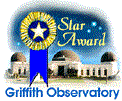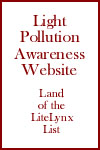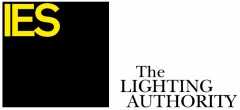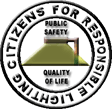It is a common but misguided assumption that bright lights prevent crime. The fact is, many crime studies have been performed over the years and none have ever offered positive scientific evidence indicating bright lighting has anything whatsiever to do with crime prevention or reduction. This is because no adequate control groups were ever employed and also because numerous changes (not just lighting) were employed at the same time. In conjunction with other measures, when lighting was improved (not necessarilly increased) certain types of crimes were reduced and other types of crimes increased. Vehicle thefts and break-ins generally increase when roadway or area lighting levels are increased. This curious phenomenon may be due to criminals being able to identify tempting contents better inside of vehicles when the lighting is brighter.
People often *feel* safer outdoors when in uniformly illuminated areas, however, recent studies have concluded that areas brighter than one footcandle do not offer people any greater sense of security as brightness increases. Areas lit to high levels with glaring floodlights often makes people feel less safe than when they are in areas lit to lower illumination levels with well shielded fixtures. This feeling of greater security may be due to people's ability to see better when lighting is shielded to remove glare, thus allowing them to see better in areas of shadow that are not directly illuminated.
There are many good resources for crime statistics. For national numbers, refer to the FBI's Uniform Crime Reports (view data by state), and the Bureau of Justice Statistics Web page. In 1996 the National Institute of Justice commissioned a comprehensive crime research project that resulted in an abstract titled, "Preventing Crime: What Works, What Doesn't, What's Promising" that was presented to the US Congress in 1997, from which come the following exerpts... "Is street lighting an effective approach in the reduction and deterrence of crime? The answer is inconclusive. The paucity of reliable and uniform data and the inadequacy of available evaluation studies preclude a definitive statement regarding the relationship between street lighting and crime." (Tien, et. al. 1979, page 93, emphasis in the original) and, "Not much has changed since Tien and his colleagues (1979) gave their critical assessment of the impact of lighting on crime. In part this is due to the lack of research on lighting, particularly in the United States. However, the limited research on lighting continues to use weak designs (typically without control areas) which fail to substantially reduce our uncertainty about the effect of lighting on crime. We may speculate that lighting is effective in some places, ineffective in others, and counter productive in still other circumstances. The problematic relationship between lighting and crime increases when one considers that offenders need lighting to detect potential targets and low-risk situations (Fleming and Burrows 1986). Consider lighting at outside ATM machines, for example. An ATM user might feel safer when the ATM and its immediate surrounding area are well lit. However, this same lighting makes the patron more visible to passing offenders. Who the lighting serves is unclear." ©1996 National Institute of Justice.
|









